Iridocorneal Endothelial Syndrome (ICE) - Symptoms, Causes and Treatment
07-04-2024
What is Iridocorneal Endothelial Syndrome (ICE)?
Iridocorneal Endothelial Syndrome (ICE) is a rare eye condition that affects the cornea and iris. It is characterized by abnormalities in the endothelial cells lining the back of the cornea, as well as changes in the iris structure. These abnormalities can lead to various complications, such as corneal edema, increased intraocular pressure, and glaucoma. ICE can cause vision problems and may require ongoing management by an eye care professional to monitor and address any related issues.What Are The Causes Of Iridocorneal Endothelial Syndrome (ICE)?
Iridocorneal Endothelial Syndrome (ICE) is thought to be caused by a dysfunction of the corneal endothelial cells, which are responsible for maintaining the proper balance of fluid within the eye. This dysfunction can lead to changes in the shape and function of the cornea, as well as abnormalities in the structures of the iris. While the exact cause of this dysfunction is not fully understood, it is believed that a combination of genetic and environmental factors may play a role in the development of ICE. Further research is needed to fully understand the underlying mechanisms of this syndrome.What Are The Risk Factors For Iridocorneal Endothelial Syndrome (ICE)?
Risk factors for developing Iridocorneal Endothelial Syndrome (ICE) include a family history of the condition, being female, and being of middle to older age. Individuals with a history of eye trauma or surgery may also be at an increased risk for developing ICE. Additionally, certain underlying conditions such as diabetes and Fuchs' endothelial dystrophy may predispose individuals to developing this syndrome. It is important for individuals with these risk factors to be aware of the potential for developing ICE and to seek regular eye examinations to monitor their eye health.What Are The Symptoms Of Iridocorneal Endothelial Syndrome (ICE)?
Symptoms of Iridocorneal Endothelial Syndrome (ICE) typically include blurred or distorted vision, increased sensitivity to light, and pain or discomfort in the eye. Patients may also experience halos around lights, changes in the color of the iris, and a gradual loss of vision. Additionally, some individuals with ICE may notice a decrease in the size of their pupils or develop glaucoma, which can lead to further vision problems if left untreated. If any of these symptoms are present, it is important to schedule an eye exam with an optometrist to determine the underlying cause and appropriate treatment options.How is Iridocorneal Endothelial Syndrome (ICE) Diagnosed?
Iridocorneal Endothelial Syndrome (ICE) is diagnosed through a comprehensive eye examination by an eye care professional. During the exam, the optometrist will evaluate the patient's medical history, symptoms, and perform various tests to assess the health of the eyes. These tests may include measuring intraocular pressure, assessing the structure of the eye using a slit lamp, and examining the cornea and iris for any abnormalities. Additionally, a special imaging test called specular microscopy may be used to evaluate the endothelial cells on the back surface of the cornea. Based on the findings from these tests, the optometrist can make a diagnosis of ICE and recommend appropriate treatment options.How is Iridocorneal Endothelial Syndrome (ICE) Treated?
Iridocorneal Endothelial Syndrome (ICE) is typically managed through a combination of medications, procedures, and surgeries aimed at controlling intraocular pressure and improving vision. Treatment options for ICE may include the use of topical medications such as eye drops to help lower eye pressure, as well as oral medications to reduce inflammation and discomfort. In more severe cases, surgical interventions such as laser therapy or trabeculectomy may be necessary to improve drainage of fluid from the eye and alleviate pressure. In some cases, a corneal transplant may be recommended to improve vision and relieve symptoms associated with ICE. It is important for individuals with ICE to work closely with their eye care provider to determine the most appropriate treatment plan based on their specific needs and symptoms.Is There A Cure For Iridocorneal Endothelial Syndrome (ICE)?
As an optometrist, I can confirm that there is currently no cure for Iridocorneal Endothelial Syndrome (ICE). While there are treatments available to help manage the symptoms and slow down the progression of the disease, such as medications or surgical interventions, these methods are focused on preserving vision and alleviating discomfort rather than curing the condition outright. It is important for individuals diagnosed with ICE to work closely with their eye care provider to monitor their condition and explore treatment options that can help maintain the health of their eyes.How Can Iridocorneal Endothelial Syndrome (ICE) Be Prevented?
Iridocorneal Endothelial Syndrome (ICE) cannot be prevented as it is a rare and complex eye condition that involves the growth of abnormal cells on the cornea. However, regular eye exams and early detection can help manage the symptoms and potentially slow the progression of the disease. It is important for individuals with a family history of eye conditions or those experiencing changes in their vision to seek professional eye care to monitor their eye health and catch any potential issues early on. Leading a healthy lifestyle, including maintaining a balanced diet and protecting the eyes from injury or trauma, can also help support overall eye health and potentially reduce the risk of developing complications associated with ICE. Schedule An Appointment
Adult Eye Exams
Our advanced eye exams consist of 25+ modern tests and digital scans to assess eye health, function, and visual acuity.

Child Eye Exams
Give your child a clear future with an annual eye exam from our experienced Edmonton optometrists.

Senior Eye Exams
Maintain your vision through your golden years with gold standard eye care from the optometrists at our Edmonton eye clinic.

Contact Lens Eye Exams
Our eye exams for contact lens wearers include test and digital scans to assess eye health, function, visual acuity, and lens fit.
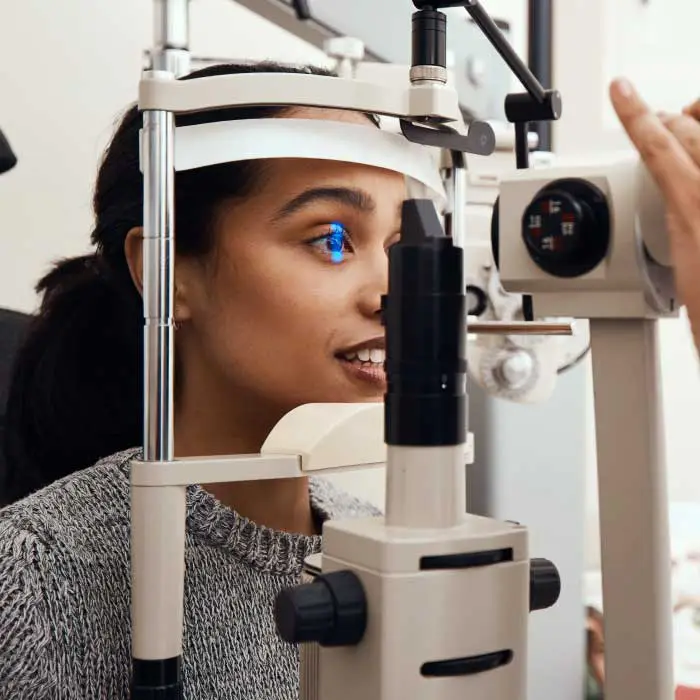
Diabetic Eye Exams
Managing diabetes requires regular eye exams to ensure that diabetes is not causing irreversible vision loss.
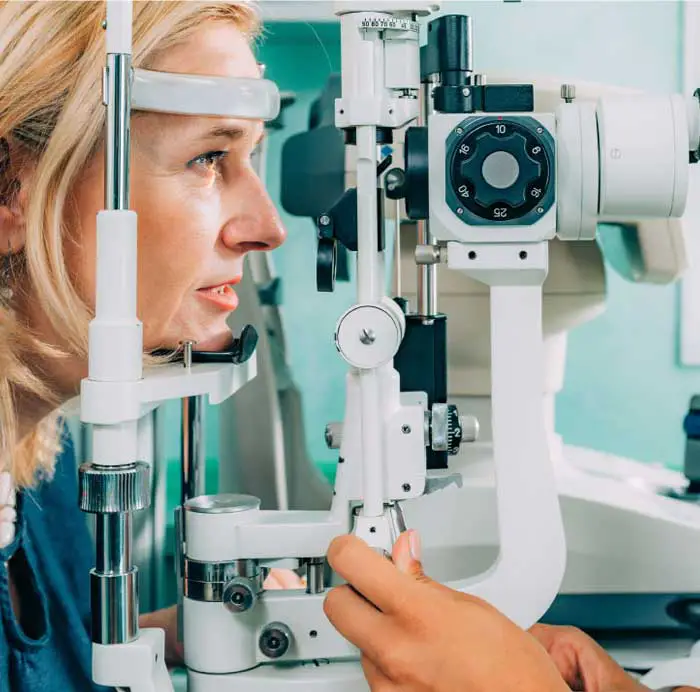
Dilated Eye Exams
Dilating the eyes enables our Edmonton optometrists to see more of the eye so that you many never see less.
Our Edmonton Eye Exams Are Comprised Of 4 Phases Of Evaluation
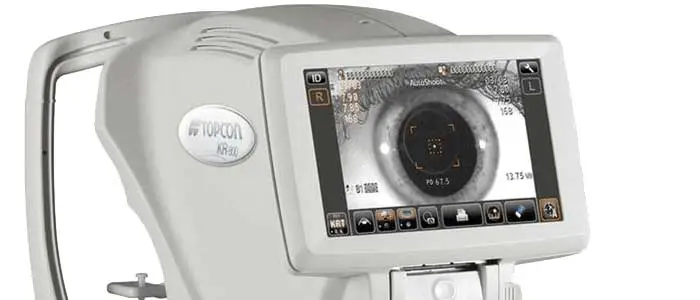
1. Eye Exam Pre-Testing
Corneal Thickness | Intraocular Pressures | Visual Field
Pre-testing is a detailed process that gathers all necessary information for the optometrist in advance of the optometrist-administered eye examination. This process involves completing a detailed patient history, as well as a series of standard tests. Pre-testing is an essential part of the comprehensive eye exam process, providing valuable information and visuals for both the optometrist and the patient.
More About Pre-Testing »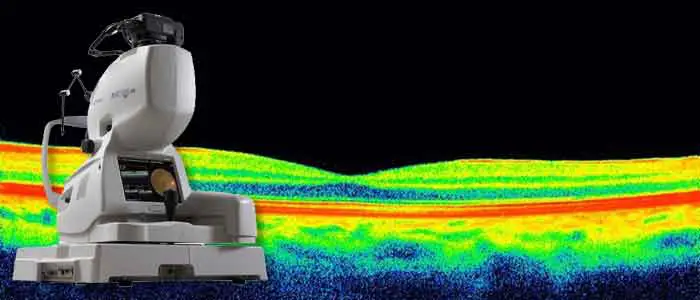
2. Advanced Diagnostic Testing
Retinal Photography, OCT, Topography
eye-deology Vision Care differentiates itself from other clinics by having the most advanced modern diagnostic specialty testing equipment. Specialty equipment, such as a wide-angle high-resolution retinal imager, Optical Coherence Tomography (OCT), Humphrey Visual Field Analyzer and corneal topographer, ensures that patients receive the best comprehensive eye care.
More About Advanced Testing »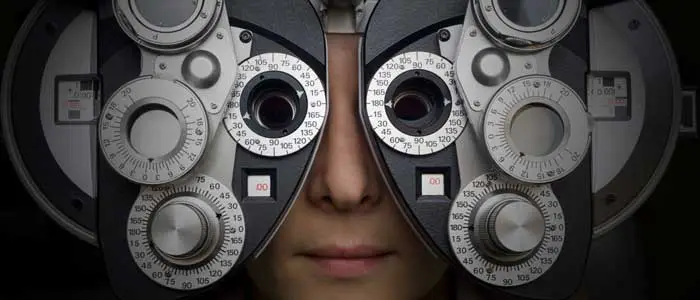
3. Optometrist Examination
Health Assessment & Disease Diagnosis
eye-deology Vision Care Edmonton optometrists perform a multitude of tests and assessments to evaluate ocular health, eye coordination, and visual acuity. In addition, they also evaluate the results of the tests and scans performed during pre-testing. As part of patient education, our optometrists also take the time to show and explain results to patients.
More About Doctor Exam »
4. Eye Glass Consult
Prescription | Lens Selection | Digital Fitting
If you require corrective lenses to improve your vision, our licensed opticians will customize their fit to your unique attributes, needs, lifestyle, and budget. Our opticians are happy to provide you with information about the latest eyeglass frame and lens technologies available so you can make informed decisions and begin seeing and looking your best.
More About Eyewear Consult »